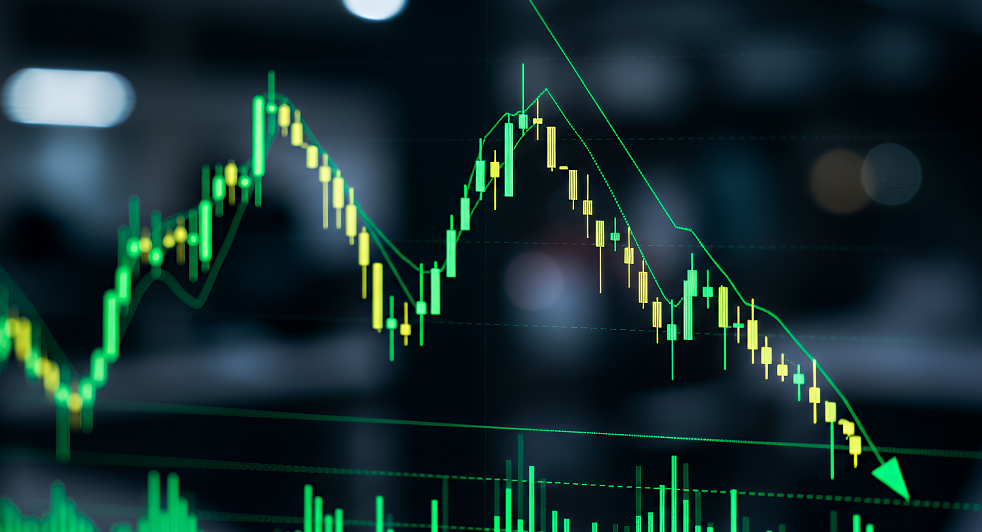IC Markets Europe Fundamental Forecast | 13 August 2025
What happened in the Asia session?
The Asia session on August 13, 2025, was shaped by a rally in equities (especially Japan’s Nikkei 225), buoyant global sentiment on the hope of Fed rate cuts, softer inflation pressures, and key central bank moves. Currencies were mixed, with the Australian dollar weaker after a rate cut. Japanese government bonds saw weak demand despite the equity surge, and crypto (ether) hit multi-year highs amid technology optimism. The mild U.S. inflation, delayed tariffs, and stable macro data dominated market direction and risk appetite.
What does it mean for the Europe & US sessions?
Focus today is on the potential for a Fed rate cut, the record highs in U.S. indices, and strong flows into European and emerging markets. Closely track the U.S. macro releases, Fed commentary, and further CPI/PPI data due out this week.In India, monitor Nifty and Bank Nifty levels, pay attention to corporate earnings (especially Paytm, Nykaa, ONGC), and watch for fresh inflation data. Look out for volatility in commodities and currency pairs, especially as European trading begins and flows continue to shift away from the U.S.
The Dollar Index (DXY)
Key news events today
No major news event
What can we expect from DXY today?
The U.S. dollar is weaker today due to mid-July inflation numbers reinforcing high odds of a September Federal Reserve rate cut, broader political uncertainty, and modest flows from global economic performance. Investors are closely monitoring Fed messaging and additional employment/inflation reports as the dollar remains at multi-week lows against key counterparts. The U.S. dollar index (DXY) fell to 98.03, down 0.04% from the previous session. Over the past month, the dollar has weakened by 0.05% and declined 4.46% in the last year. The dollar was down 0.05% at 147.76 yen, breaking a two-session winning streak and losing 0.21% from the previous day’s close.
Central Bank Notes:
- The Board of Governors of the Federal Reserve System voted unanimously to maintain the Federal Funds Rate in a target range of 4.25% to 4.50% at the July 29–30, 2025, meeting, keeping policy unchanged for the fifth consecutive meeting.
- The Committee reiterated its objective of achieving maximum employment and inflation at the rate of 2% over the longer run. While uncertainty around the economic outlook has diminished since earlier in the year, the Committee notes that challenges remain and continued vigilance is warranted.
- Policymakers remain highly attentive to risks on both sides of their dual mandate. The unemployment rate remains low, near 4.2%–4.5%, and labor market conditions are described as solid. However, inflation is still somewhat elevated, with the PCE price index at 2.6% and core inflation forecast at 3.1% for year-end 2025, up from earlier projections; tariff-related pressures are cited as a contributing factor.
- The Committee acknowledged that recent economic activity has expanded at a solid pace, with second-quarter annualized growth estimates near 2.4%. However, GDP growth for 2025 has been revised downward to 1.4% (from 1.7% projected in March), reflecting expectations of a slowdown in the coming quarters.
- In the revised Summary of Economic Projections, the unemployment rate is expected to average 4.5% in 2025, and headline PCE inflation is forecast at 3.0% for the year, with core PCE at 3.1%. Policymakers continue to anticipate that inflation will moderate gradually, with ongoing risks from tariffs and global conditions.
- The Committee reaffirmed its data-dependent and risk-aware approach to future policy decisions. Officials stated they are prepared to adjust the stance of monetary policy as appropriate if risks emerge that could impede progress toward the Fed’s goals.
- As previously outlined, the Committee continues the measured run-off of its securities holdings. The pace of balance sheet reduction, which slowed since April (monthly redemption cap on Treasury securities reduced from $25B to $5B, while holding agency MBS cap steady at $35B), was left unchanged this month to support orderly market functioning and financial conditions.
- The next meeting is scheduled for 16 to 17 September 2025.
Next 24 Hours Bias
Weak Bearish
Gold (XAU)
Key news events today
No major news event
What can we expect from Gold today?
Gold is slightly up today, reflecting optimism after renewed rate cut bets, easing trade tensions, and geopolitical uncertainty. Prices remain near historic highs, with technical resistance ahead. Both global and domestic (Indian) prices show modest gains, while some local markets experience short-term declines or flat movement. The U.S. dollar fell after mild July inflation data (CPI up 2.7% YoY), fueling expectations for a Federal Reserve interest rate cut in September. This environment supports gold, which typically performs better when interest rates are low.
Next 24 Hours Bias
Weak Bullish
The Euro (EUR)
Key news events today
No major news event
What can we expect from EUR today?
The euro is trading modestly higher today but remains pressured by global growth concerns, ongoing US-EU trade tensions, and cautious ECB policy. Financial markets are closely watching diplomatic moves regarding the Ukraine situation and internal EU fiscal debates as both could shape the euro’s direction in the weeks ahead. The euro traded at 1.1683-1.1687 against the US dollar today, registering a slight gain (0.05%-0.08% higher) from the previous session. Over the past month, the euro strengthened 0.16%-0.18%, and is up 6.10%-6.13% in 12 months.
Central Bank Notes:
- The Governing Council kept the three key ECB interest rates unchanged at its July 24 meeting, maintaining the main refinancing rate at 2.15%, the marginal lending facility at 2.40%, and the deposit facility at 2.00%, following eight consecutive cuts preceding this decision.
- The decision to hold rates steady was driven by evidence that inflation is stabilizing near the Governing Council’s medium-term target of 2%. Policymakers communicated that further moves on rates would be data-dependent, explicitly refraining from pre-committing to any future path amid persistent global and domestic uncertainties.
- According to the latest Eurosystem staff projections, headline inflation is expected to remain around 2.0% for 2025, with projections indicating 1.6% for 2026 and a rebound to 2.0% in 2027. Downward revisions from previous forecasts primarily reflect lower energy price assumptions and a stronger euro. Inflation excluding energy and food is seen averaging 2.4% in 2025 and 1.9% in 2026–2027, little changed from prior projections.
- Real GDP growth for the Eurozone is forecast at 0.9% in 2025, 1.1% in 2026, and 1.3% in 2027. The projections note that a strong first quarter offsets a weaker outlook for the rest of 2025. While business investment and exports are dampened by ongoing trade policy uncertainties—including recent U.S. tariff measures—rising government investment, particularly in defense and infrastructure, is expected to progressively underpin growth.
- Household spending should be supported by firm real income gains and a still-solid labour market. More favorable financing conditions are expected to help strengthen the economy’s resilience to further global shocks. Wage growth, although still elevated, continues to moderate, with profit margins partially absorbing cost pressures.
- Amid significant geopolitical and economic uncertainty, the Governing Council underscored its commitment to ensuring inflation stabilises sustainably at the 2% target. The ECB reiterated it would pursue a meeting-by-meeting, data-dependent approach to its monetary policy stance.
- Future rate decisions will be guided by the assessment of incoming economic and financial data, the outlook for inflation and underlying inflation dynamics, and the effectiveness of monetary policy transmission. The Council continues to stress that it is not pre-committed to any specific rate trajectory.
- The asset purchase programme (APP) and pandemic emergency purchase programme (PEPP) portfolios are continuing to decline in an orderly and predictable way, as the Eurosystem has ceased reinvesting principal payments from maturing securities.
- The next meeting is on 11 September 2025
Next 24 Hours Bias
Weak Bullish
The Swiss Franc (CHF)
Key news events today
No major news event
What can we expect from CHF today?
On August 13, 2025, the Swiss franc reflects ongoing strength and safe-haven status, but faces near-term corrections and technical volatility on FX markets. The SNB’s recent rate cut to 0% is a major milestone, responding to falling consumer prices and export pressures from US tariffs. Further rate cuts and selective FX intervention remain possible if deflation does not abate. Swiss businesses, especially exporters and consumer brands, are adapting to this challenging currency environment. The USD/CHF is trading around 0.8110, and technical forecasts suggest a bearish correction to about 0.8075 before a potential rebound targeting higher levels above 0.8275 if upward momentum resumes. A drop below 0.8035 would signal continued declines, possibly toward 0.7845.
Central Bank Notes:
- The SNB eased monetary policy by lowering its key policy rate by 25 basis points, from 0.25% to 0% on 19 June 2025, marking the sixth consecutive reduction.
- Inflationary pressure has decreased further as compared to the previous quarter, decreasing from 0.3% in February to -0.1% in May, mainly attributable to lower prices in tourism and oil products.
- Compared to March, the new conditional inflation forecast is lower in the short term. In the medium term, there is hardly any change from March, putting the average annual inflation at 0.2% for 2025, 0.5% for 2026, and 0.7% for 2027.
- The global economy continued to grow at a moderate pace in the first quarter of 2025, but the global economic outlook for the coming quarters has deteriorated due to the increase in trade tensions.
- Swiss GDP growth was strong in the first quarter of 2025, but this development was largely because, as in other countries, exports to the U.S. were brought forward.
- Following the strong first quarter, growth is likely to slow again and remain rather subdued over the remainder of the year; the SNB expects GDP growth of 1% to 1.5% for 2025 as a whole, while also anticipating GDP growth of 1% to 1.5% for 2026.
- The SNB will continue to monitor the situation closely and will adjust its monetary policy if necessary to ensure inflation remains within the range consistent with price stability over the medium term.
- The next meeting is on 25 September 2025.
Next 24 Hours Bias
Weak Bearish
The Pound (GBP)
Key news events today
No major news event
What can we expect from GBP today?
The British Pound is trading stably against most major currencies on August 13, 2025, with significant institutional uncertainty about future movement. Domestic resilience, sticky inflation, interest rate debates at the Bank of England, and global factors such as US policy and geopolitical tensions all contribute to today’s Pound sentiment. On August 13, 2025, the British Pound is trading around $1.3504, showing stability compared to the previous session. Over the past month, GBP has strengthened by 0.57% and is up 5.30% year-on-year. The exchange rate reflects cautious optimism as UK labour market data signals resilience despite ongoing economic pressures.
Central Bank Notes:
- The Bank of England’s Monetary Policy Committee (MPC) voted on 7 August 2025 by a majority (exact split likely 5–3–1 or similar, based on expectations) to cut the Bank Rate by 25 basis points to 4.00%. Multiple members supported the move, citing fragile economic growth and signs of disinflation, while others preferred a larger reduction, and at least one member voted to hold the rate steady due to concerns about persistent inflation.
- The Committee unanimously decided to continue reducing the stock of UK government bond purchases held for monetary policy purposes by £100 billion over the next 12 months, targeting a balance of £558 billion by October 2025. As of 7 August, the gilt stock stands at £590 billion.
- Disinflation has been substantial since 2023 owing to policy tightening and the fading of external shocks. However, an unexpected uptick in headline CPI inflation—to 3.6% in June—reflects pass-through from regulated prices and earlier energy price rises, as well as signs of sticky core inflation.
- Headline CPI inflation is now 3.6%, above the Bank’s 2% target, reflecting regulated and energy price effects. The Committee expects inflation to remain around this level through Q3 before resuming its downward trend into 2026.
- UK GDP growth remains weak. Business and consumer surveys point to lacklustre activity, and the labour market continues to loosen, with increasing evidence of slack. Wage growth has softened but remains above pre-pandemic norms.
- Pay growth and employment indicators have moderated further, and the Committee expects a significant slowing in pay settlements over the rest of 2025.
- Global uncertainty remains elevated, especially with rising energy prices and supply disruptions linked to conflict in the Middle East and renewed trade tensions. These factors prompt the MPC to remain vigilant in monitoring cost and wage shocks.
- The risks to inflation are considered two-sided. With the outlook for growth subdued and inflation persistence less clear, the Committee argues that a gradual and careful approach to further easing is warranted, with future policy decisions highly data-dependent.
- The Committee’s bias is still towards maintaining monetary policy at a restrictive stance until there is firmer evidence that inflation will return sustainably to the 2% target over the medium term. Further adjustments to policy will be decided on a meeting-by-meeting basis, with scrutiny of developments in demand, costs, and inflation expectations.
- The next meeting is on 18 September 2025.
Next 24 Hours Bias
Weak Bearish
The Canadian Dollar (CAD)
Key news events today
No major news event
What can we expect from CAD today?
AD is trading near its weakest levels in several months, reflecting economic and geopolitical headwinds. Job losses and weak domestic demand pressure the central bank to accommodate. Tariffs and softer commodity prices further challenge the currency. Watch for the Bank of Canada’s policy updates and potential for rate-induced movements later in the year. Canada lost 41,000 jobs in July, notably worse than the 13,500 job gain forecasted by analysts. The unemployment rate held at 6.9%, renewing concerns over domestic demand and pushing expectations for the Bank of Canada to adopt a more accommodative monetary policy
Central Bank Notes:
- The Bank of Canada maintained its target for the overnight rate at 2.75%, with the Bank Rate at 3% and the deposit rate at 2.70% as of July 30, marking the third consecutive meeting with rates on hold.
- The Council cited ongoing U.S. tariff adjustments and unresolved trade negotiations as driving factors for elevated economic uncertainty. The persistence of tariffs well above early-2025 levels continues to present downside risks for growth and keeps inflation expectations elevated, supporting a cautious approach to monetary easing.
- The lack of a clear U.S. policy path, plus frequent threats of additional tariffs, led the Bank to highlight risks to Canadian exports and broader demand, amplifying uncertainty about future growth.
- Canada’s economic growth in the first quarter came in at 2.2%, slightly stronger than the original forecast, while the composition of GDP growth was largely as expected. Consumption slowed from its very strong fourth-quarter pace, but continued to grow despite a large drop in consumer confidence.
- Canadian GDP growth is expected to be near 0% in Q2 2025, closely aligned with the more optimistic scenario outlined earlier in the year. Weakness in manufacturing activity—driven by both U.S. trade disruptions and sector-specific challenges like wildfires—contributed to softer output. A partial recovery is anticipated in Q3 due to rebuilding efforts and stronger retail sales in June.
- Consumer spending slowed, especially as households front-loaded durable goods purchases ahead of tariffs. Housing activity remains subdued, with resales and construction still soft despite some government tax relief measures.
- Headline CPI inflation continued to ease, holding close to 1.7% in June, aided by declines in energy prices following the removal of the fuel charge. However, the Bank’s measures of core inflation and underlying price pressures moved up further due to higher import costs from tariffs and lingering supply disruptions.
- The Governing Council reiterated it will carefully weigh ongoing upward inflation pressure from tariffs and cost shocks against the gradual downward pull from economic weakness. While additional rate cuts remain possible, timing and scale will depend on trade policy developments and inflation’s path..
- The next meeting is on 17 September 2025.
Next 24 Hours Bias
Weak Bearish
Oil
Key news events today
EIA Crude Oil Inventories (2:30 pm GMT)
What can we expect from Oil today?
Oil markets are described as in a “wait-and-see” posture, balancing concerns about oversupply and hopes for a geopolitical breakthrough. Traders are cautious, looking for inventory data and the impact of the U.S.–Russia negotiations on price stability. Today, after declining in the previous session. Brent crude is trading around $66.15–$66.21/bbl and WTI around $63.14–$63.21/bbl, showing only marginal day-on-day changes. Over the last month, Brent and WTI prices have fallen 4–6% and are down about 17–18% compared to the same time last year. U.S. crude inventories rose by 1.52 million barrels last week, according to API, signaling the end of peak summer demand. Gasoline inventories fell, but distillates increased slightly.
Next 24 Hours Bias
Weak Bearish




